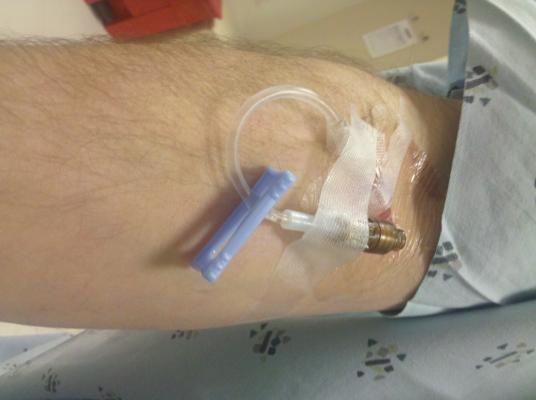
August 14, 2019 – Children’s veins are small and sometimes difficult to access during necessary medical treatment. When caregivers used ultrasound to guide placement of intravenous (IV) lines in children with presumed difficult access, they had higher success rates on their first attempt. Researchers from Children’s Hospital of Philadelphia (CHOP) report that this technique reduces the number of needle sticks in their young patients.
The research was published in the July 2019 issue of Annals of Emergency Medicine.1
“The need to place an intravenous line is a common but challenging requirement for pediatric healthcare providers,” said Alexandra M. Vinograd, M.D., an emergency medicine physician at CHOP and the lead investigator of this study. “Our research shows that both the children and their parents are happier with ultrasound-guided line insertion.”
The researchers prospectively enrolled 167 patients identified as having difficult IV access that were randomized to receive either traditional IV line or care from a multidisciplinary team trained to place ultrasound-guided IV lines on the first attempt. The children were divided into two groups: age zero to three years old, and over age three.
First-attempt success was higher in the ultrasound-guided IV line placement group (85.4 percent) compared to the traditional intravenous line group (45.8 percent). When asked to score their satisfaction with the IV line placement, parents favored the ultrasonically guided placement over the traditional method.
“In our study, ultrasound-guided intravenous lines remained in place longer than traditional insertion, without an increase in complications,” said Joseph J. Zorc, M.D., emergency medicine physician at CHOP and senior author of the study. “These results may be used to update guidelines for intravenous line access in children in an effort to limit the number of needle sticks they experience.”
Both nurses and physicians had high rates of first-attempt success. The high rate of nurse success led to a training program in CHOP’s Emergency Department that broadly trains nurses in ultrasound-guided IV line placement. “Ultrasound-guided access is now standard procedure for patients with presumed difficult intravenous access,” added Vinograd.
For more information: www.annemergmed.com
Reference
1. Vinograd A.M., Chen A.E., Woodford A.L., et al. Ultrasonic Guidance to Improve First Attempt Success In Children With Predicted Difficult Intravenous Access in the Emergency Department: A Randomized Controlled Trial. Annals of Emergency Medicine, published online May 21, 2019. DOI: https://doi.org/10.1016/j.annemergmed.2019.02.019


 December 23, 2025
December 23, 2025 









